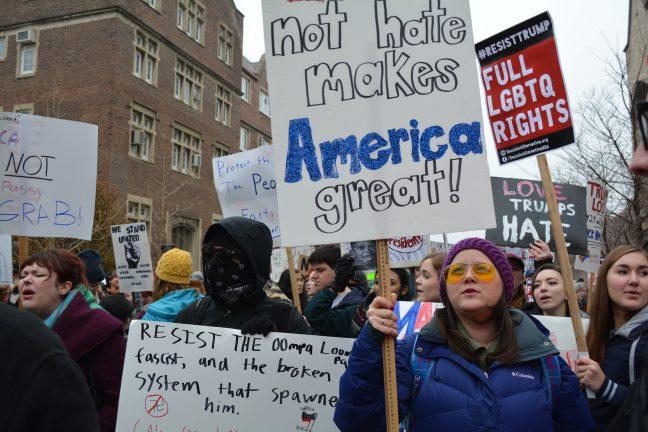In a recent interview, the American historian Jill Lepore, author of the one-volume history of the U.S., “These Truths,” described her concern with a question that historians are often asked by white political commentators: “Has it ever been this bad?”
“It,” refers presumably to the state of the nation — the institutions, the political culture, perhaps to a shared civic or national identity. By “this bad,” it’s assumed the white commentators mean ideological polarization, partisan gridlock and eroded mainstream political norms — features of the system that frustrate any hope of national unity.
The other iteration of this question, “have we ever been so divided?” she finds more concerning still. It isn’t that the questions are unanswerable — they’re just intolerably ignorant. When they are posed to her, Lepore answers, incredulous: “Bad for whom? Who do you mean by we?”
Lepore isn’t trying to dodge white people’s questions or be flippant with their anxieties about national politics. She is only asking them to be thoughtful and to be realistic about how they benefit from a political system created in their image.
The flaw at the core of our political system is that it was designed to perpetuate a system of white supremacy, to deliver the material and psychic benefits of whiteness to white people. For this reason, the political system only appears to be functioning “normally” when the system makes good on its commitment to whiteness and people of color are excluded from participating in political institutions.
Of course, Lepore would agree, the American political system is a garbage fire — but it’s a fire that has been burning for a while, the flames fanned by white supremacy. For citizens and immigrants of color, it has always been this bad because the country, as a matter of government policy and private consensus, has systematically excluded them from political institutions and public life. While the tactics for this systematic exclusion evolved, their underlying motivation did not. Lynching, poll-taxes, literacy tests, racial segregation and immigrant quotas in one era gave way to voter ID laws, racial gerrymandering and border walls in another.
But a government, an entire political system, erected to preserve the myth of white supremacy — the belief in the superiority of people who are born and raised white — cannot function if it doesn’t make the myth a reality. It is times when American society seems closer to racial justice that the façade of white supremacy shows cracks. During periods when people of color are visible and vocal in spaces they were previously denied, large groups of white Americans feel as though they are denied a birthright and turn their resentment into political action — or into violence.
In our moment, this visibility is the election of the U.S.’ first Black president, the Black Lives Matter movement against police violence, a more racially and ethnically diverse polity and a congress reflecting that diversity. Given this explanation of our political system, is no surprise that white voting coalitions respond so favorably to the racist rhetoric of conservative politicians, the president not least among them.
Neither is this white resentment specific to political visibility and representation. On the campus of the University of Wisconsin, the #RealUW exemplified the daily violence visited on students of color, Jewish students, women and LGBTQ+ students by existing in academic institutions to which they had previously been denied entry. When white people perceive institutions and spaces — political or otherwise — as sources of their whiteness which is their power, their responses to sharing institutions is often anxious or violent.
So, when you hear white people, anywhere, yearn for the days of “bipartisan consensus” in politics or an end to “all this divisiveness,” remember they are mistaking a violent peace for the possibility of racial justice. Until this distinction is drawn — between a peace that makes white people feel secure and invulnerable and a justice that may trigger the worst impulses of supremacy and entitlement — we cannot see clearly what is missing from “Has is ever been this bad?”
Sam Ropa (ropa@wisd.edu) is a senior majoring in geography and anthropology.


